The open SusKelpFood workshop was hosted by our food industry partner Orkla Foods at their headquarters in Oslo, 15th of August. Over 40 participants from the industry and academic sectors were gathered. The event gave the opportunity to present lastest reseach & development activities related to the production and use of seaweeds as food. On top of it, a wide range of tasty seaweed foods and dishes were served to delighted participants throughout the day!
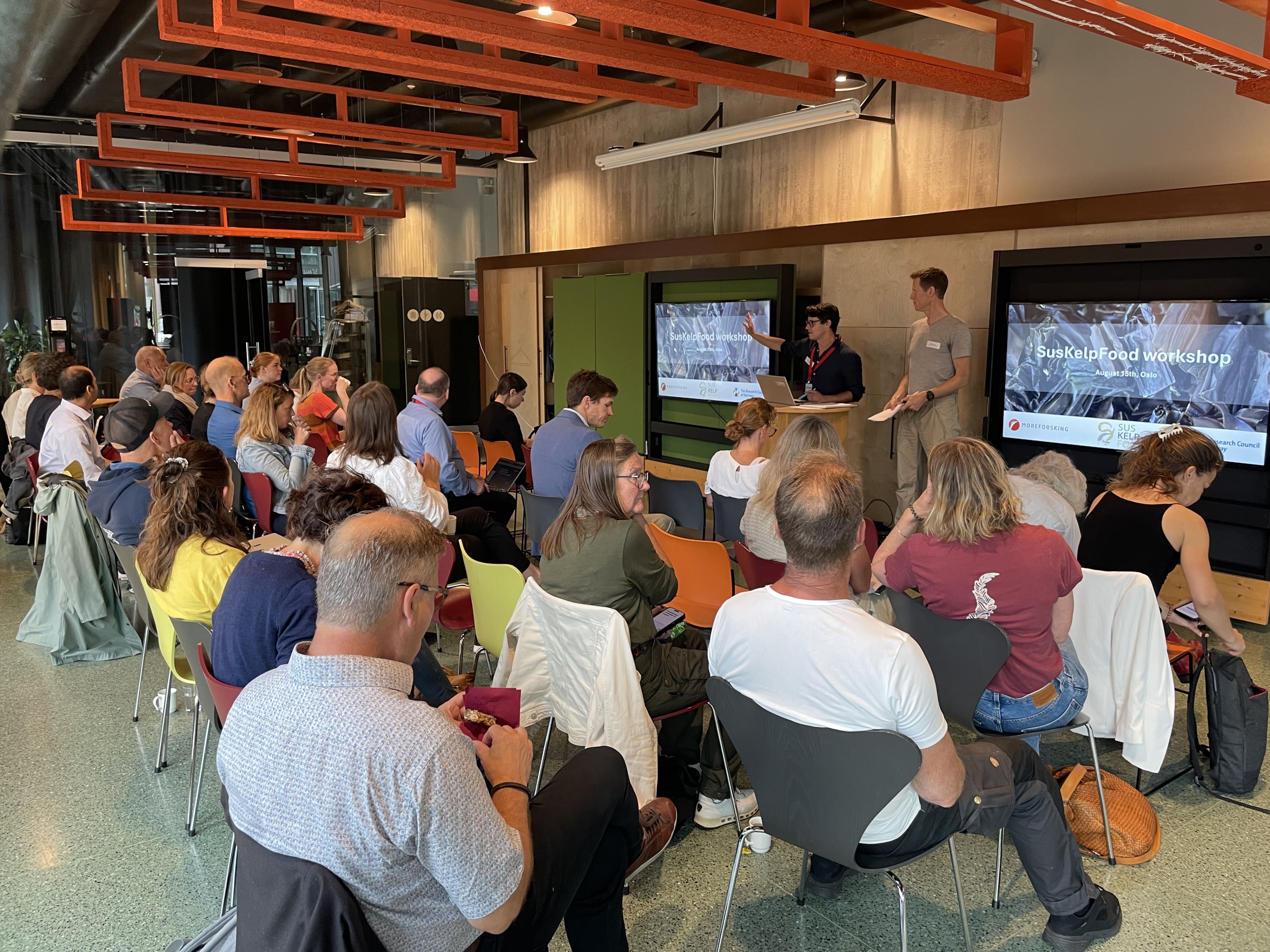
SusKelpFood project leader Pierrick Stévant (Møreforsking), and co-project leader Arne Duinker (Institute of Marine Research) opening the day.
The Workshop marked the SusKelpFood project's final year and conveyed results from activities related to kelp processing, quality aspects including nutritional value, flavour properties and food safey, along with consumer behavior and sustainability. Other ongoing R&D and commercial initiatives from both Scandinavia and Europe were also presented.
Insights on commercial perspectives for developing seaweed food products from a large food manufacturer (Orkla Foods) and smaller producers emphasized the importance of gradually introducing seaweed into Nordic diets and to provide positive taste experiences to the consumer together with a positive communication around this unfamiliar type of food for many. Seaweeds have the ability to enhance the flavour of the food to which they are added. A practical demonstration was given to the participants, who had to differenciate between a fish soup containing winged kelp and a standard soup without kelp. The test conducted by Møreforsking's sensory expert Wenche Emblem Larssen, showed that the majority of participants were able to discriminate the two soups.
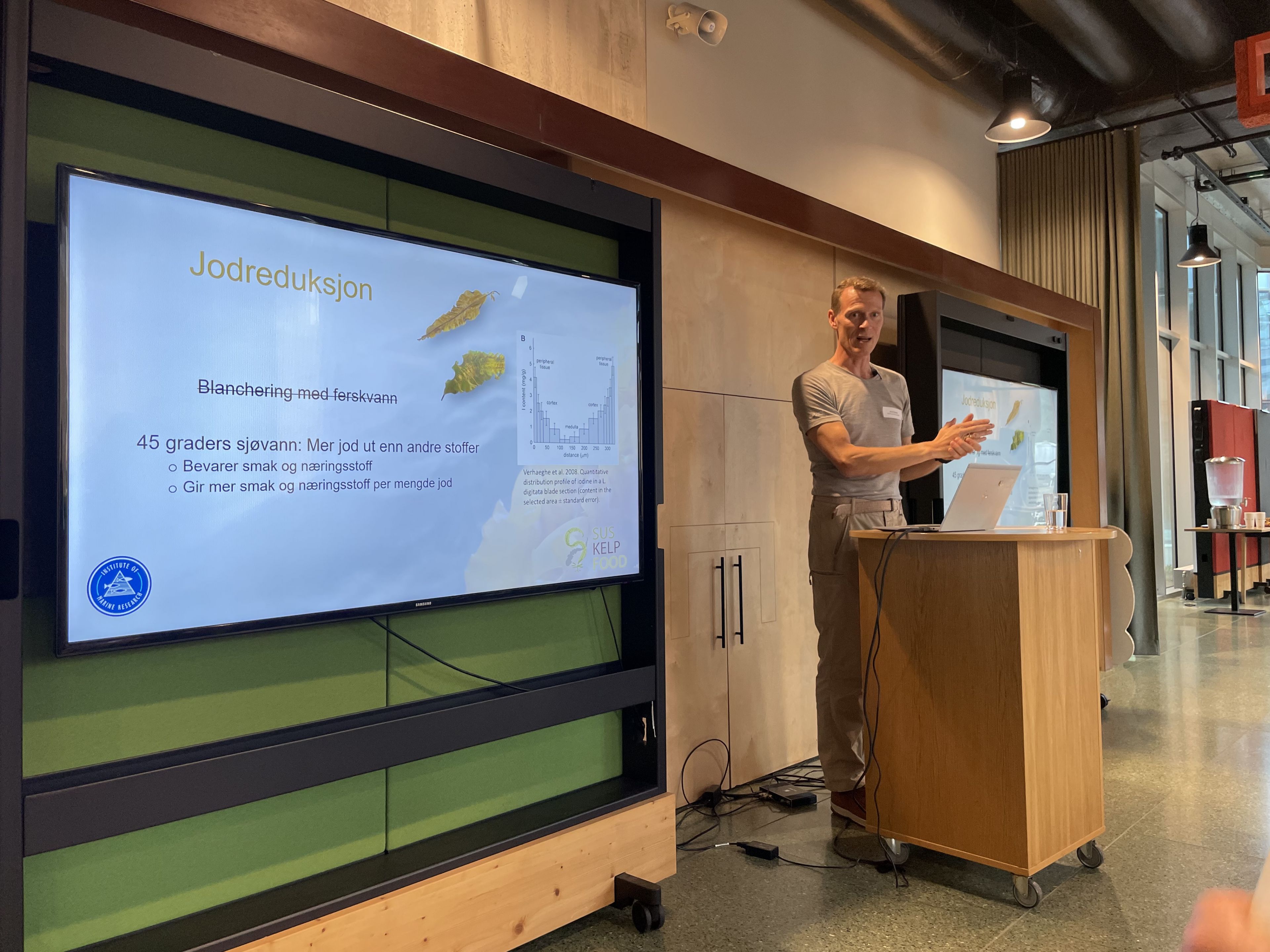
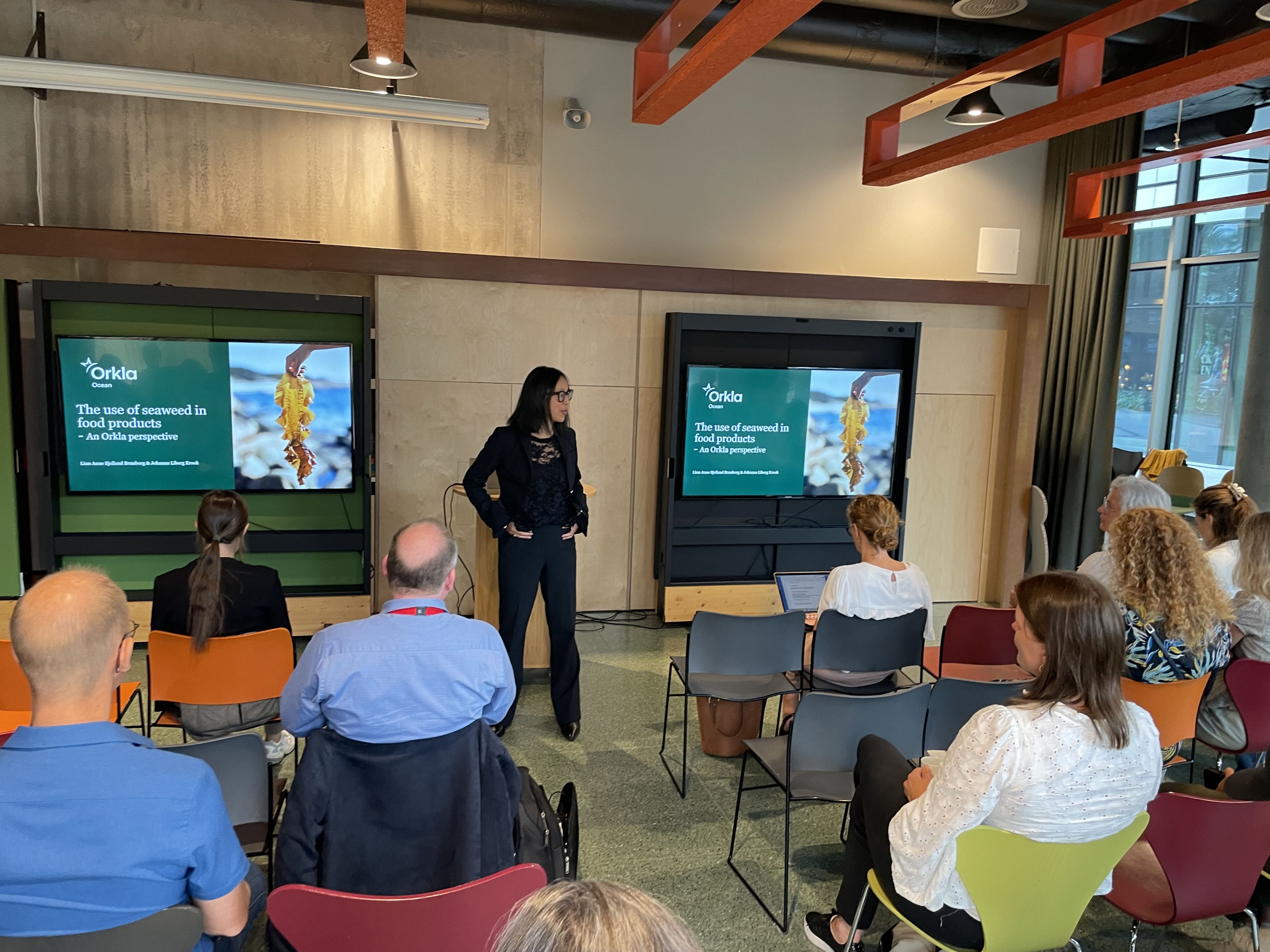
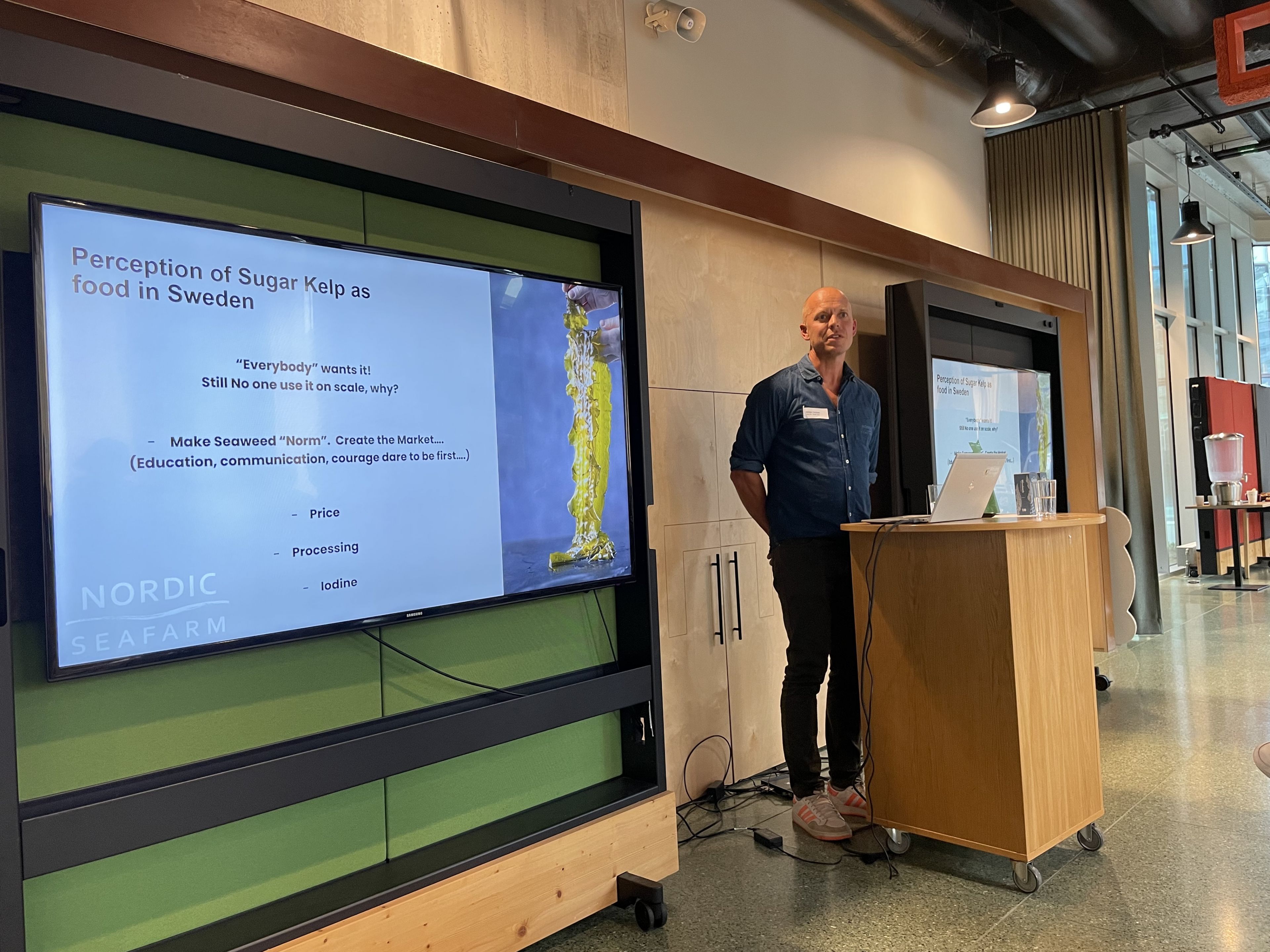
Presentations were given by a wide range a seaweed experts on various topics, from the academic sector and industry. From left to right: Arne Duinker (Institute of Marine Research), Linn Anne Brunborg Bjelland (Nofima), Niklas Carlson (Nordic SeaFarm). A pdf version of the presentations can found in the bottom of the page.
Culinary inspiration was a central part of the workshop. A highlight of the day was the cooking demonstration given by chef Jimmy Øien from Rest restaurant in Oslo accompanied by Angelita Eriksen from Lofoten Seaweeds. Jimmy and Angelita showed the audience that seaweeds such as winged kelp, sugar kelp, dulse and sea lettuce, can be included in a wide range a food preparations. The first example consisted of a traditional japanese broth (dashi) made with winged kelp, which was later used to prepare a butter sauce served with cabbage. Sea lettuce was used in a crust as topping on oven-baked halibut and as a tasty and visually appealing condiment in the traditional "Skagen toast". Jimmy serves seaweeds in his restaurant but he revealed he got inspired for a new desert during the workshop.
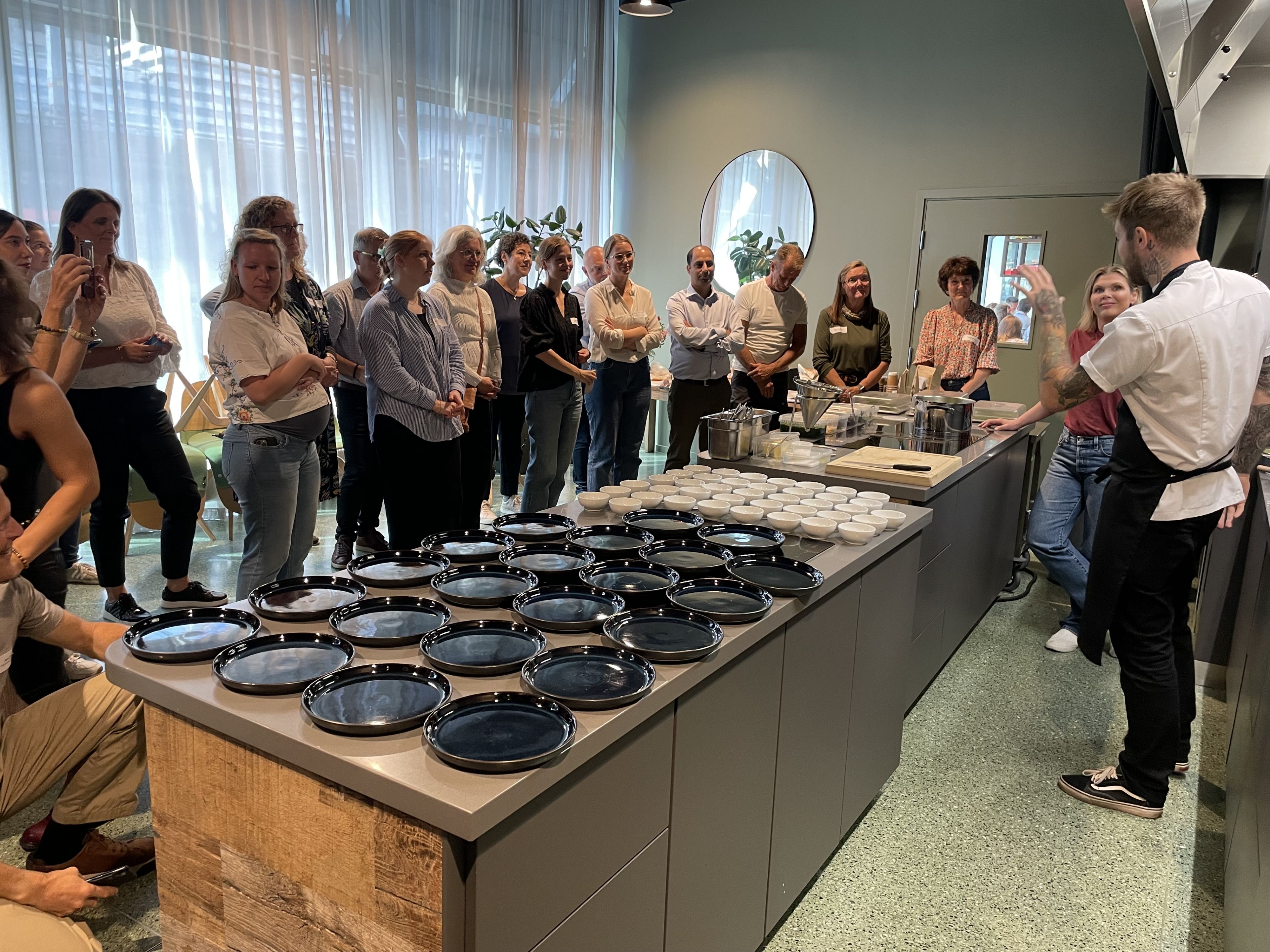

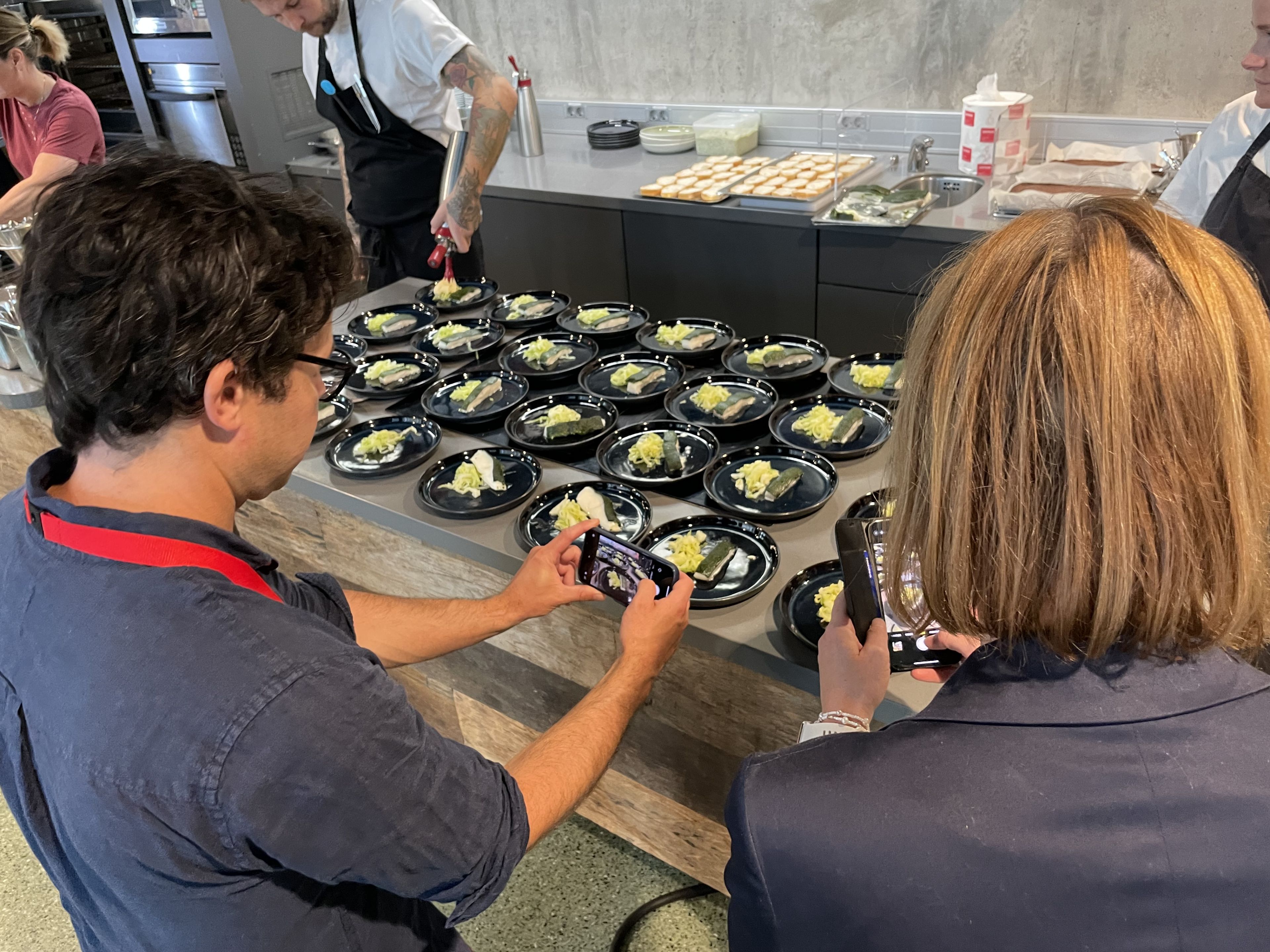
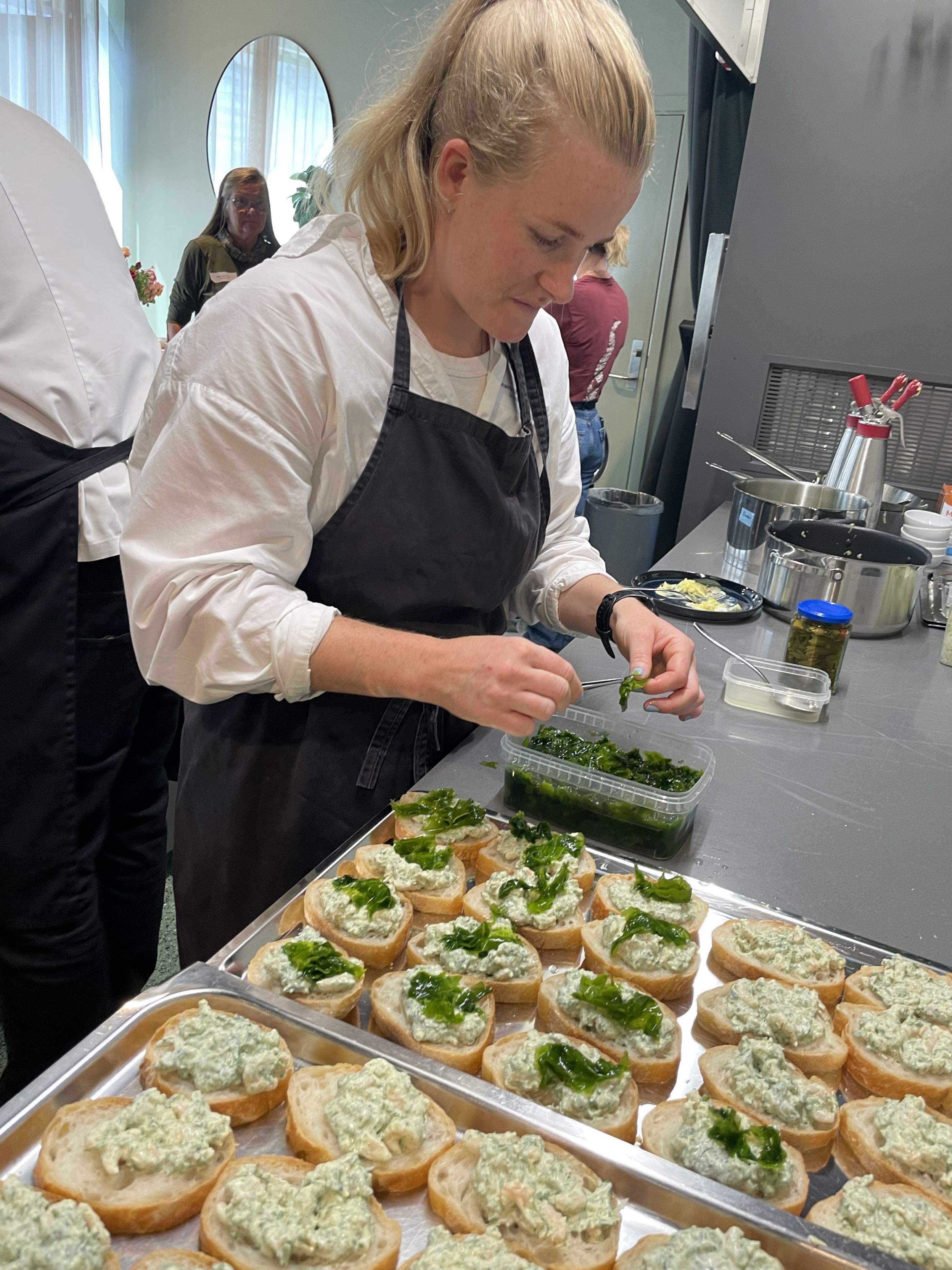
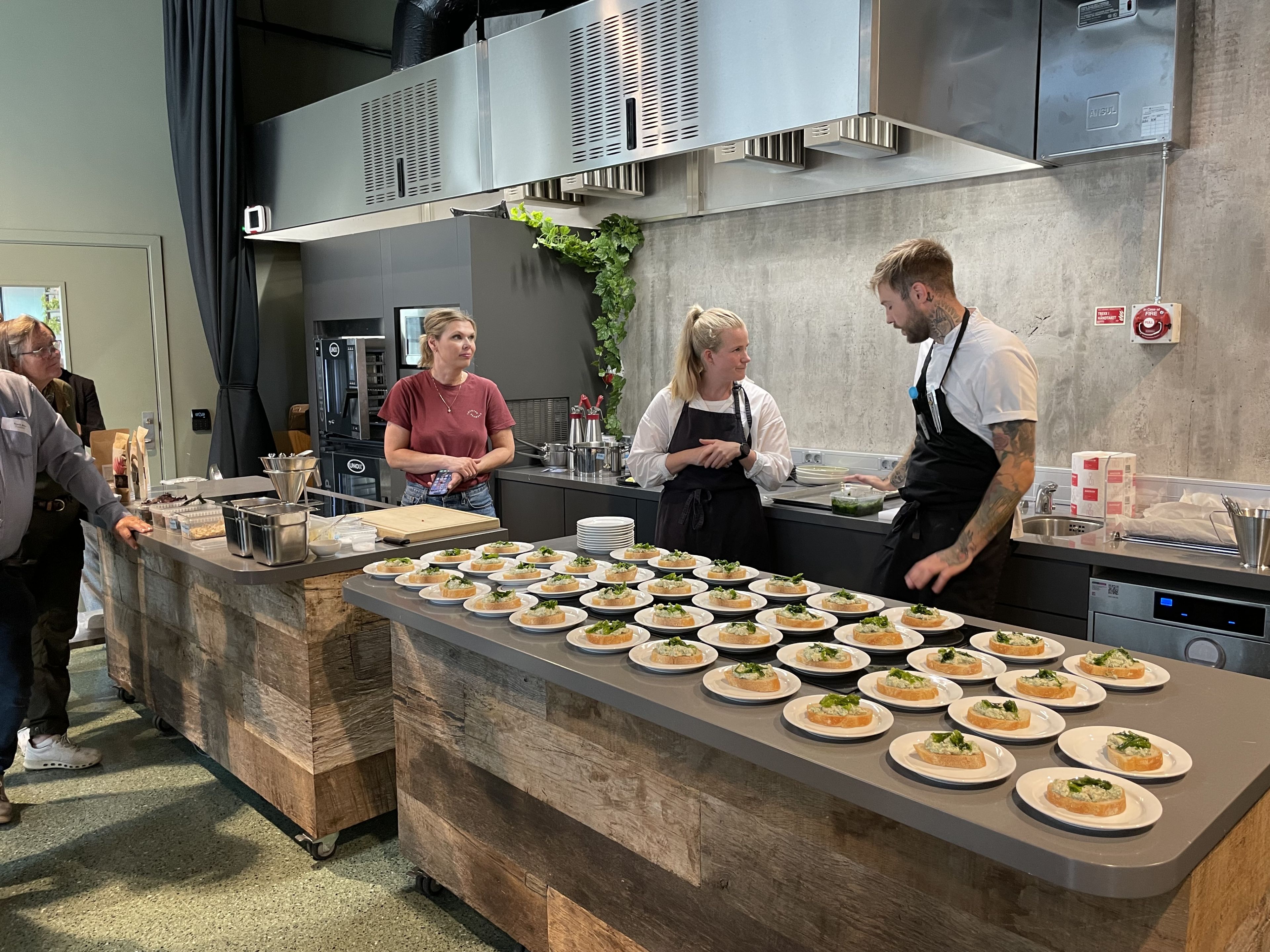
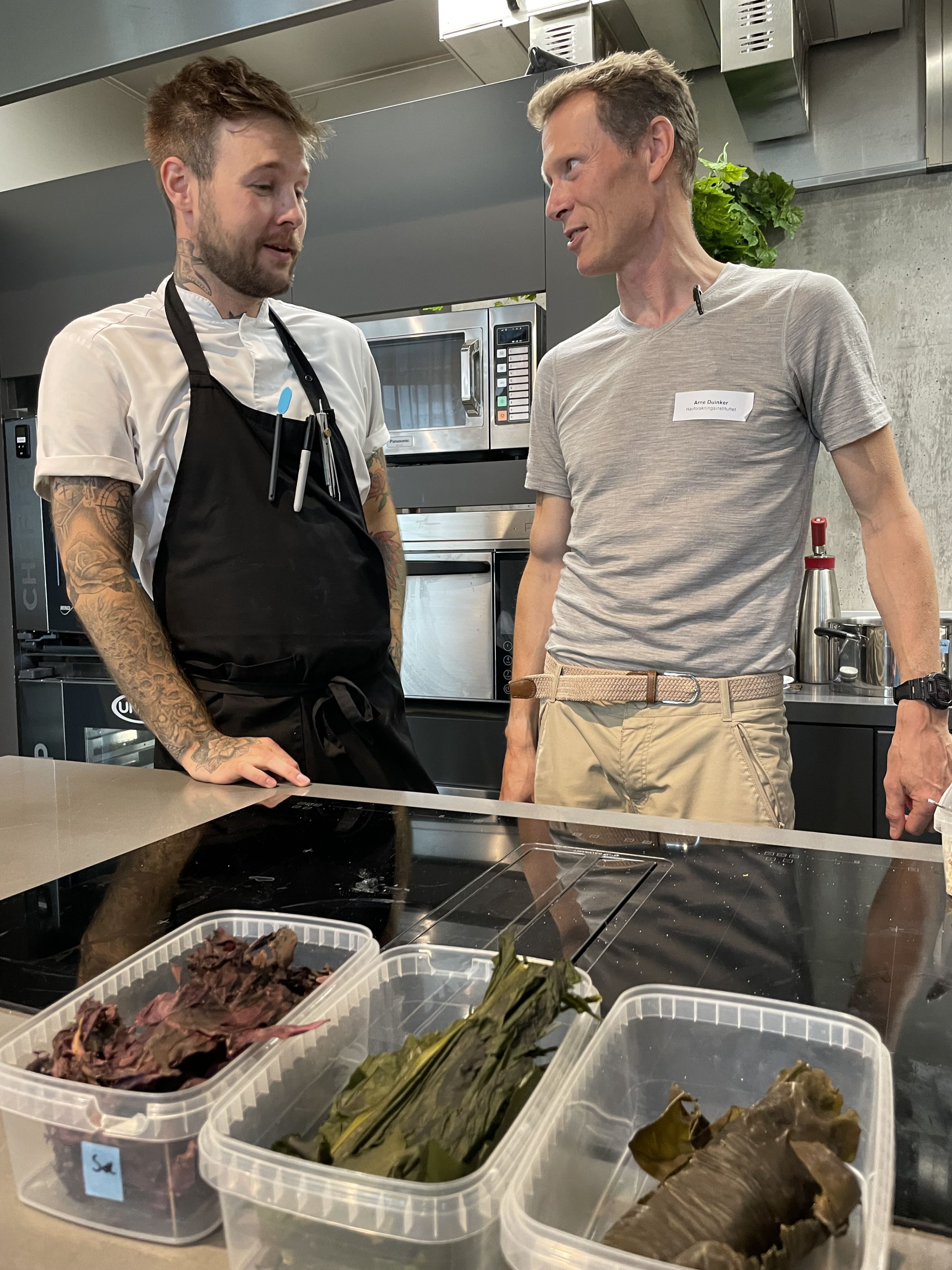
Delighted participants and delishious food served by Jimmy Øien and Angelita Eriksen!
Besides, workshop participants were served various seaweed snacks and apetizers including toasts with pickled bladderwrack, kelp-infused salt caramel, white chocolate with dusle and many more.
At the end of the workshop, the participants got to enjoy even more food with seaweeds in an informal setting at Orkla's demo-kitchen. Tapas including seaweed burgers (from the Seaweed Company), scallops with lime-marinated dulse, Norwegian lobster with dried sugar kelp were served until the evening marking the end of a truely memorable day celebrating seaweed as food!
“Working with seaweed in food comes with a whole new set of rules. If you cook it too hard it tastes like shore, if you bake it with fish – it changes the texture. You need to know how to use it!”
Jimmy Øyen, Rest restaurant
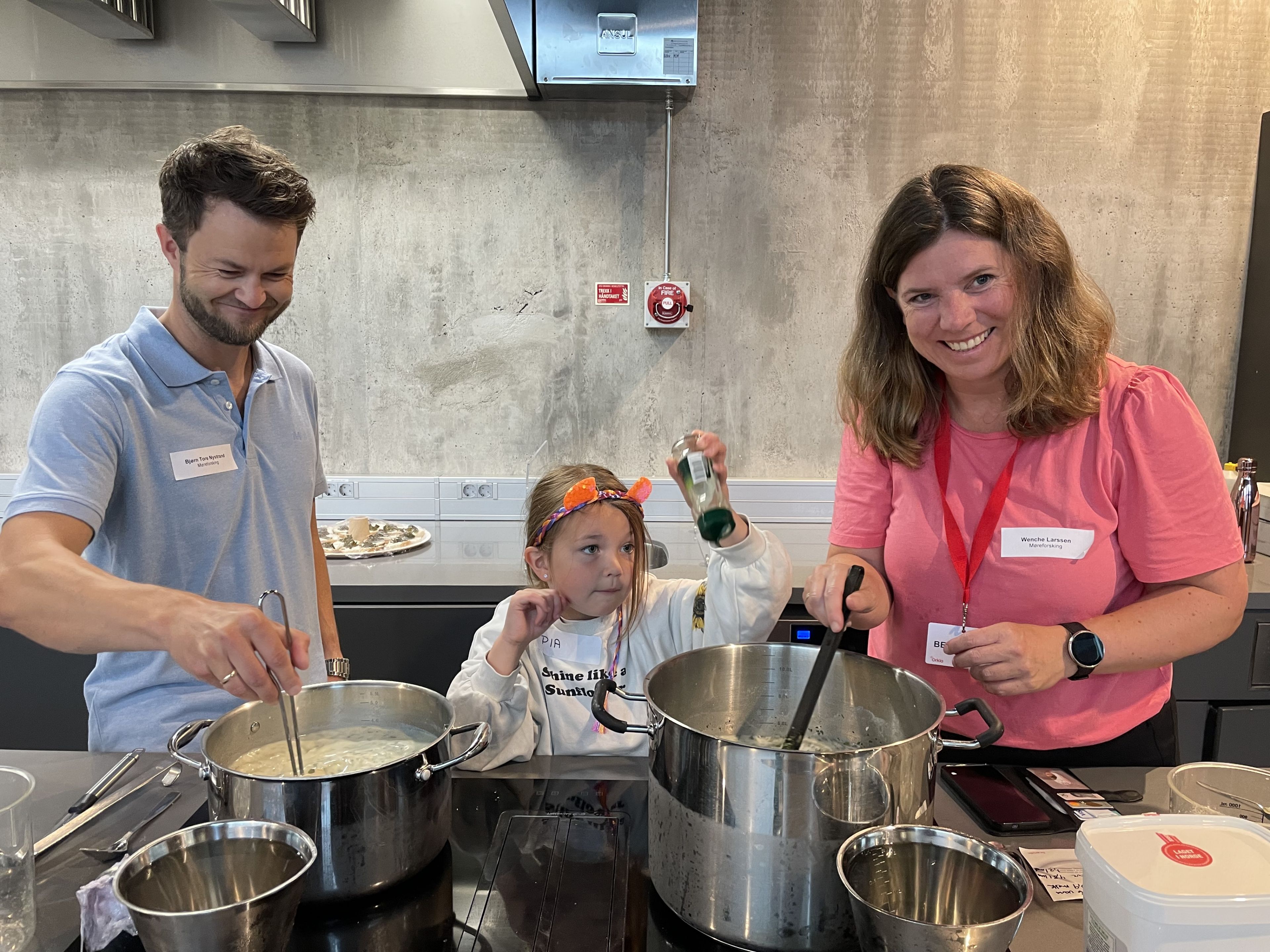
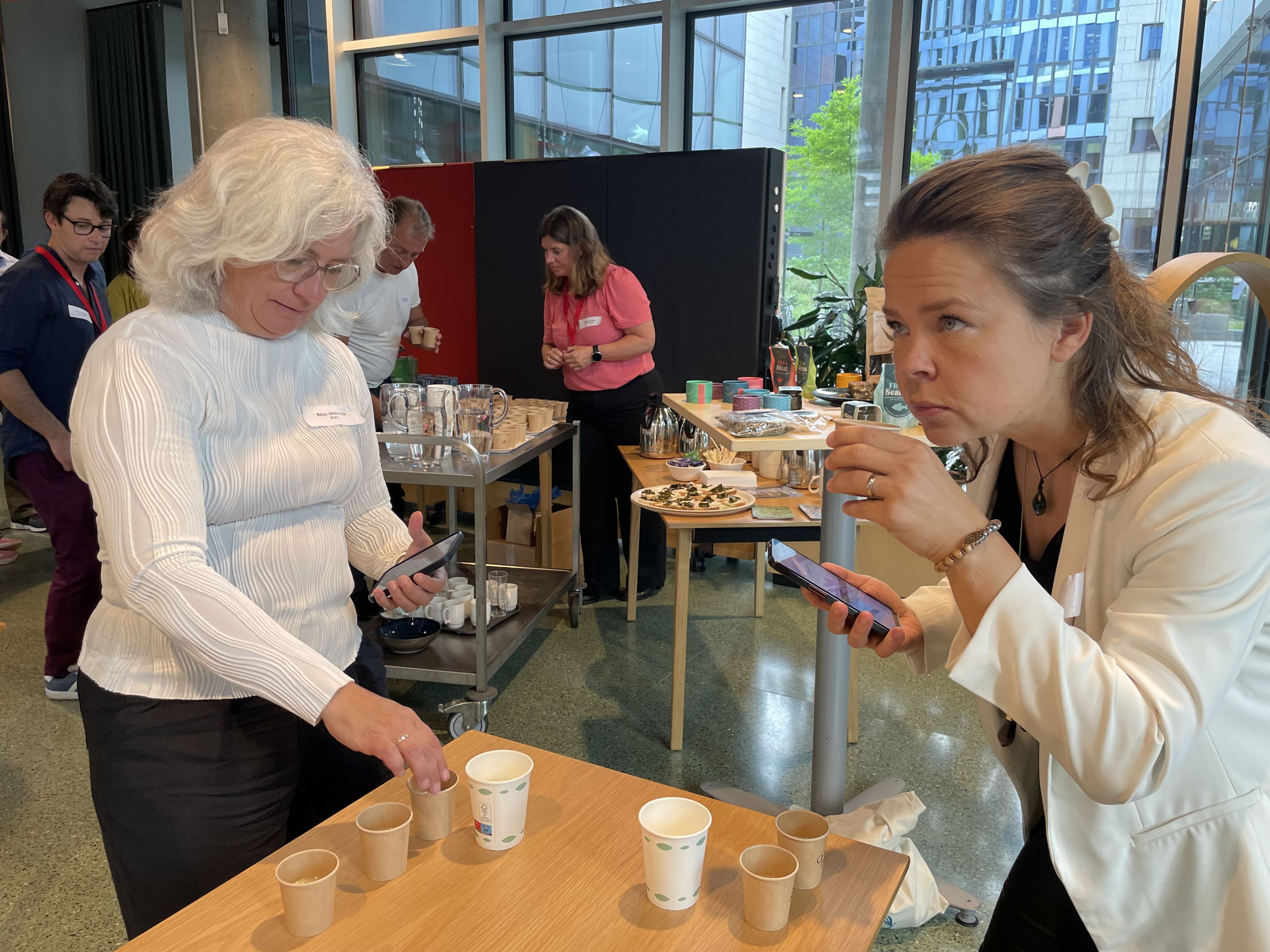
Cooking team preparing the fish soups for the sensory test and delegate from Iceland trying to sense the difference.

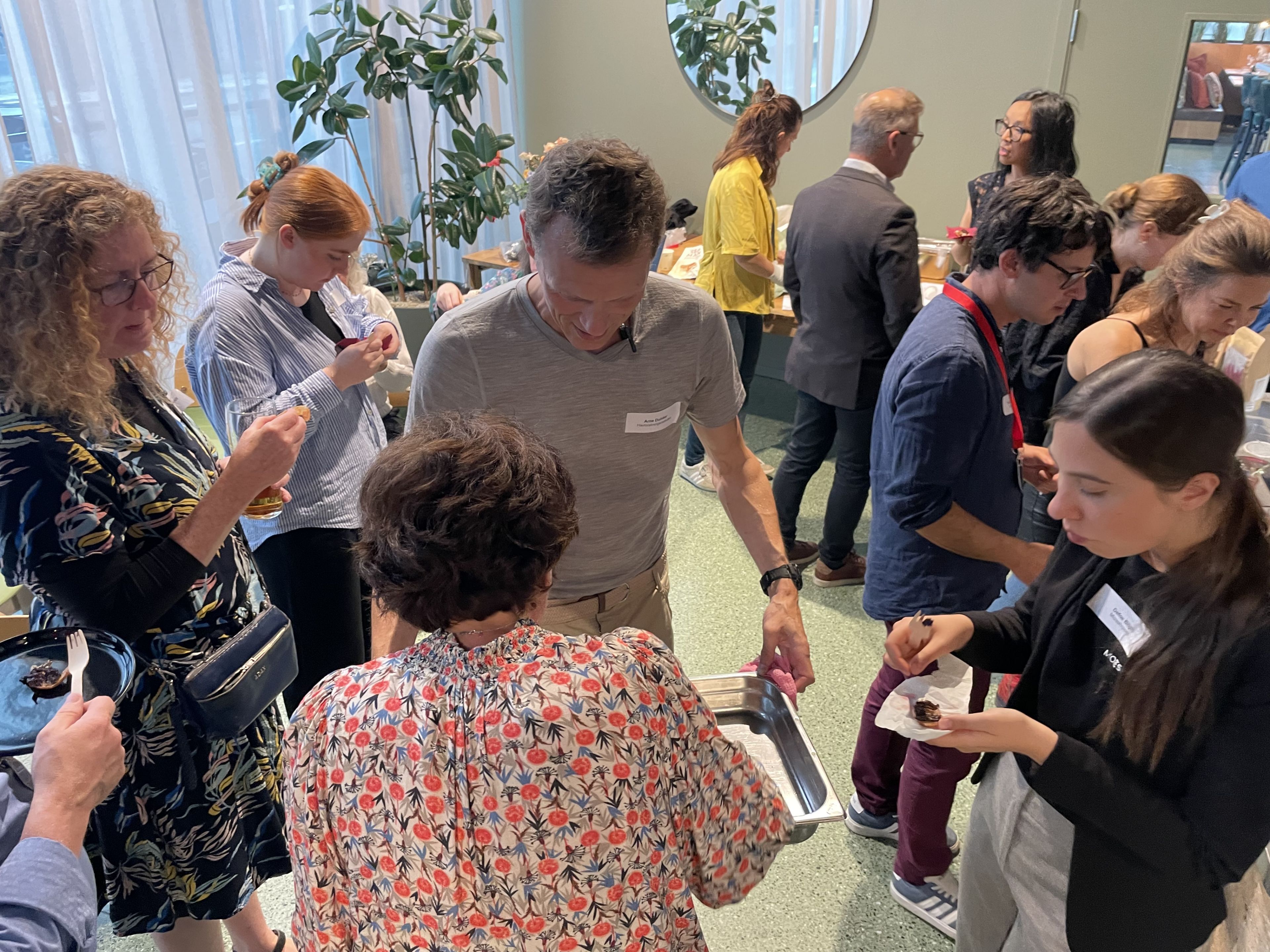
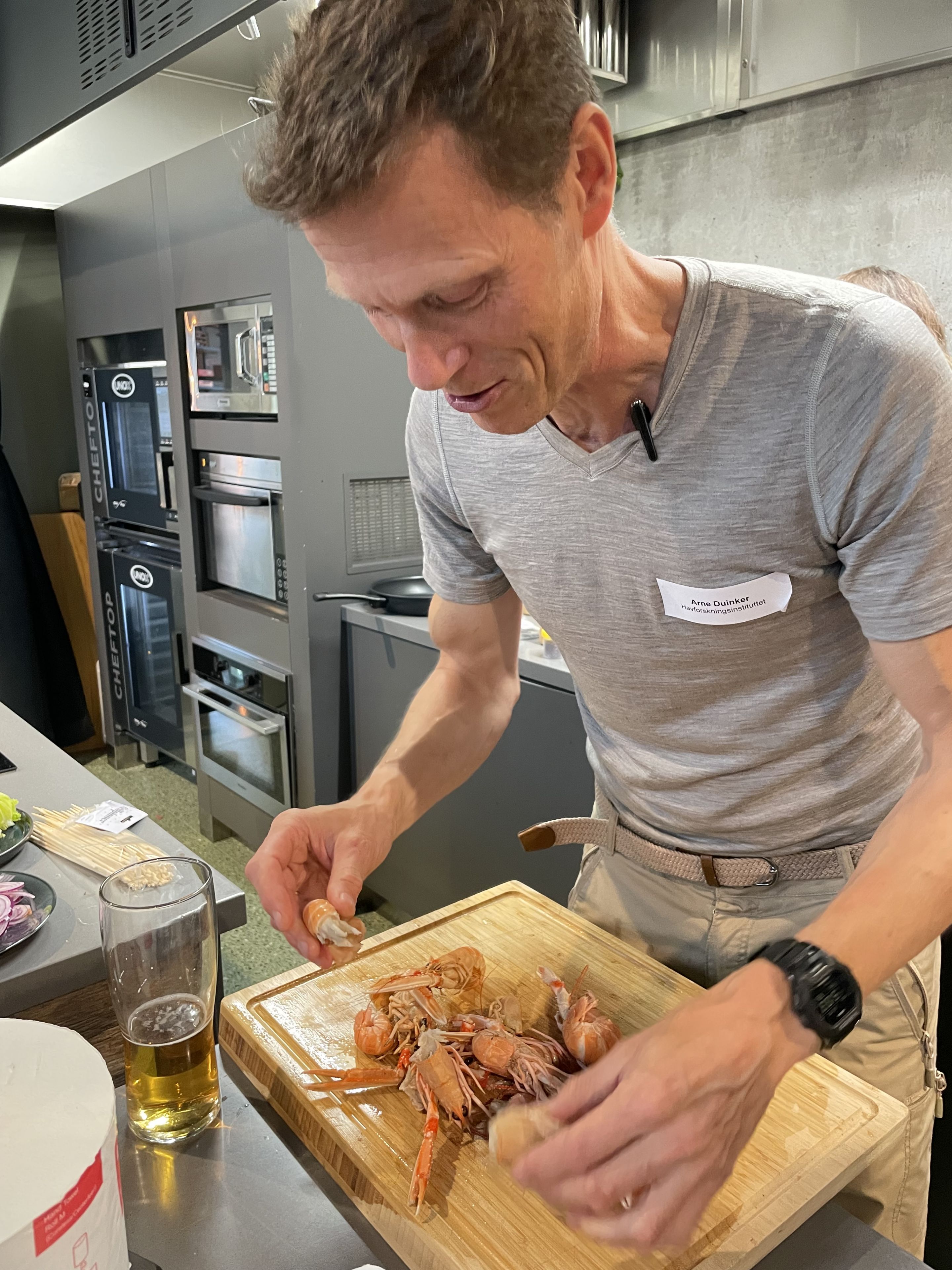
Tapas, here prepared by Ole Aarbakke and Benedikte Koldingsnes from the Norwegian Seaweed Association and Arne Duinker.
Workshop presentations
Session 1: Processing of seaweeds to food
Session 2: Use of seaweeds in commercial applications
Session 3: Quality of seaweed ingredient as food
Session 4: Market for seaweed as food